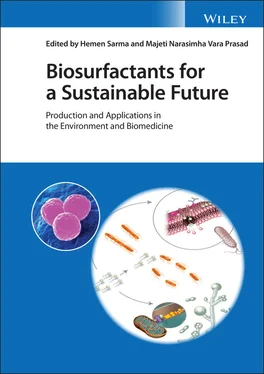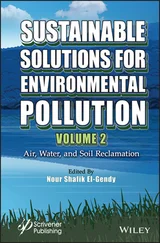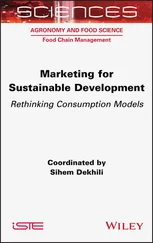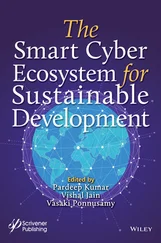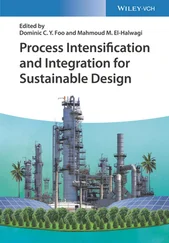This book explains how various methods can be used to recognize and classify microorganism‐producing biosurfactants in the environment. In addition, the various aspects of biosurfactants, including structural characteristics, developments, production, bioeconomics and their sustainable use in the environment, and biomedicine, are addressed. It presents metagenomic strategies to facilitate the discovery of novel biosurfactants (mechanistic understanding and future prospects) for the sustainable remediation of emerging pollutants.
The use of microbes for human well‐being is a prospective challenge, as they have developed novel chemicals and their metabolic pathway could be altered through omics approaches to the production of high‐value chemicals (HVCs), including biosurfactants. These chemicals may be used in sustainable remediation techniques such as the regulation of the antibiotic resistance gene (AGR) and microbe‐enhanced oil recovery (MEOR). We continue to face new and difficult challenges in the restoration of the environment, because current methods of remediation require so many chemicals that have again polluted the environment. There is a need to turn to more efficient alternative approaches and to find environmentally friendly chemicals for sustainability. As a result, the microbial world has the option of offering a replacement for green high‐value chemicals to replace certain hazardous compounds already used in environmental reclamation.
This book opens a window on the rapid development of microbiology sciences by explaining how microbes and their products are used in advanced medical technology and in the sustainable remediation of emerging environmental contaminants. The authors concentrate on the environment as well as the biomedical field and highlight the role of microbes in the real world. This book will be updated to reflect current knowledge, the latest developments in the field of biosurfactants, sustainable remediation applications, and applied medical sciences, and the biotechnological strategies being developed to improve production processes. The most important goal of writing this book will be to communicate current advances and challenges in biosurfactant research. This will allow the reader to understand the dynamics of applied science that underlie microbially derived surfactants, called biosurfactants, and their use in sustainable remediation technology. The basic aim is to include updated content throughout in order to keep pace with this advancing field.
Key features:
Addresses the applications of biosurfactants in sustainable remediation technology, for example, as agents to form emulsions and biofilm formation for desorption of hydrophobic pollutants.
Discusses the current state of understanding of the different microbial surfactants, their classifications, properties, how to achieve higher yields, and new applications.
There is a substantial research result on biosurfactants that envisages our capacity to build a consolidated framework for further development of applications. Biosurfactants for sustainable remediation technology should fill this need, covering the latest trend on biosurfactant research and their applications.
The book was contributed by 56 authors from leading surfactants research groups from Brazil, Costa Rica, China, India, Malaysia, Oman, Portugal, Spain, and the United States, comprising 22 chapters.
1 Introduction to Biosurfactants
2 Metagenomics Approach for Selection of Biosurfactant Producing Bacteria from Oil Contaminated Soils: An Insight into Its Technology
3 Biosurfactant Production Using Bioreactors from Industrial Byproducts
4 Biosurfactants for Heavy Metal Remediation and Bioeconomics
5 Application of Biosurfactants for Microbial Enhanced Oil Recovery (MEOR)
6 Biosurfactant Enhanced Sustainable Remediation of Petroleum Contaminated Soil
7 Microbial Surfactants Are Next‐Generation Biomolecules for Sustainable Remediation of Polyaromatic Hydrocarbons
8 Biosurfactants for Enhanced Bioavailability of Micronutrients in Soil: A Sustainable Approach
9 Biosurfactants: Production and Role in Synthesis of Nanoparticles for Environmental Applications
10 Green Surfactants: Production, Properties, and Application in Advanced Medical Technologies
11 Antiviral, Antimicrobial, and Antibiofilm Properties of Biosurfactants: Sustainable Use in Food and Pharmaceuticals
12 Biosurfactant‐Based Antibiofilm Nano Materials
13 Biosurfactants from Bacteria and Fungi: Perspectives on Advanced Biomedical Applications
14 Biosurfactant‐Inspired Control of Methicillin‐Resistant Staphylococcus aureus (MRSA)
15 Exploiting the Significance of Biosurfactant for the Treatment of Multidrug‐Resistant Pathogenic Infections
16 Biosurfactants Against Drug‐Resistant Human and Plant Pathogens: Recent Advances
17 Surfactant‐ and Biosurfactant‐based Therapeutics: Structures, Properties, and Recent Developments in Drug Delivery and Therapeutic Applications
18 The Potential Use of Biosurfactants in Cosmetics and Dermatological Products: Current Trends and Future Prospects
19 Cosmeceutical Applications of Biosurfactants: Challenges and Perspectives
20 Biotechnologically Derived Bioactive Molecules for Skin and Hair‐Care Application
21 Biosurfactants as Biocontrol Agents Against Mycotoxigenic Fungi
22 Biosurfactant‐Mediated Biocontrol of Pathogenic Microbes of Crop Plants
The book explores how these twenty‐first century multifunctional biomolecules improve or replace chemically synthesized surface‐active agents with the aid of the industrial application of biosurfactant production based on renewable resources. This book is also useful for scholars, academicians in bioengineering and biomedical sciences, undergraduate and graduate students in microbiology, environmental biotechnology, health, clinical, and pharmaceutical sciences.
1
Introduction to Biosurfactants
José Vázquez Tato1, Julio A. Seijas2, M. Pilar Vázquez‐Tato2, Francisco Meijide1, Santiago de Frutos1, Aida Jover1, Francisco Fraga3, and Victor H. Soto4
1 Departamento de Química Física, Facultad de Ciencias, Universidad de Santiago de Compostela, Avda, Lugo, Spain
2 Departamento de Química Orgánica, Facultad de Ciencias, Universidad de Santiago de Compostela, Avda, Lugo, Spain
3 Departamento de Física Aplicada, Facultad de Ciencias, Universidad de Santiago de Compostela, Avda, Lugo, Spain
4 Escuela de Química, Centro de Investigación en Electroquímica y Energía Química (CELEQ), Universidad de Costa Rica, San José, Costa Rica
1 1.1 Introduction and Historical Perspective
2 1.2 Micelle Formation
3 1.3 Average Aggregation Numbers
4 1.4 Packing Properties of Amphiphiles
5 1.5 Biosurfactants
6 1.6 Sophorolipids
7 1.7 Surfactin
8 1.8 Final Comments
9 Acknowledgement
10 References
1.1 Introduction and Historical Perspective
Surface tension is a property that involves the common frontier (boundary surface) between two media or phases. Strictly speaking, the surface tension of a liquid should mean the surface tension of the liquid in contact and equilibrium with its own vapor. However, as the gas phase has normally a small influence on the surface, the term is generally applied to the liquid–air boundary. The phases can also be two liquids (interfacial tension) or a liquid and solid. According to IUPAC, the surface tension is the work required to increase a surface area divided by that area [1]. This is the reversible work required to carry the molecules or ions from the bulk phase into the surface implying its enlargement and corresponds to the increase in Gibbs free energy ( G ) of the system per unit surface area (A),
Читать дальше
